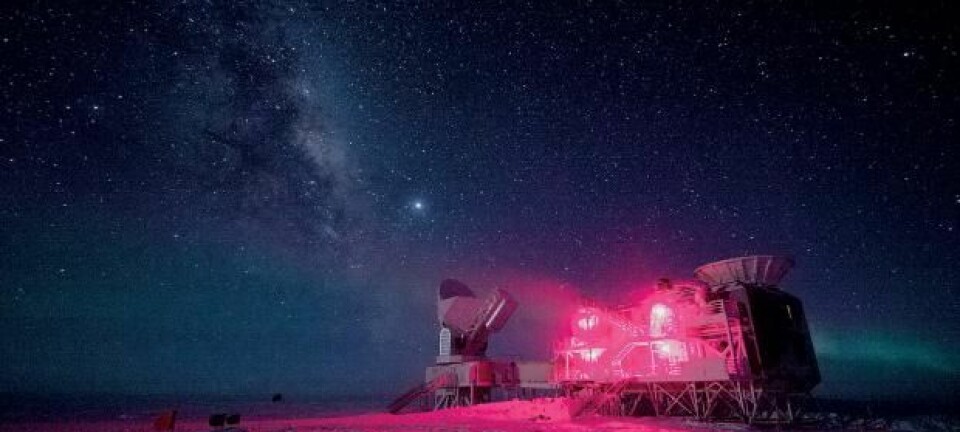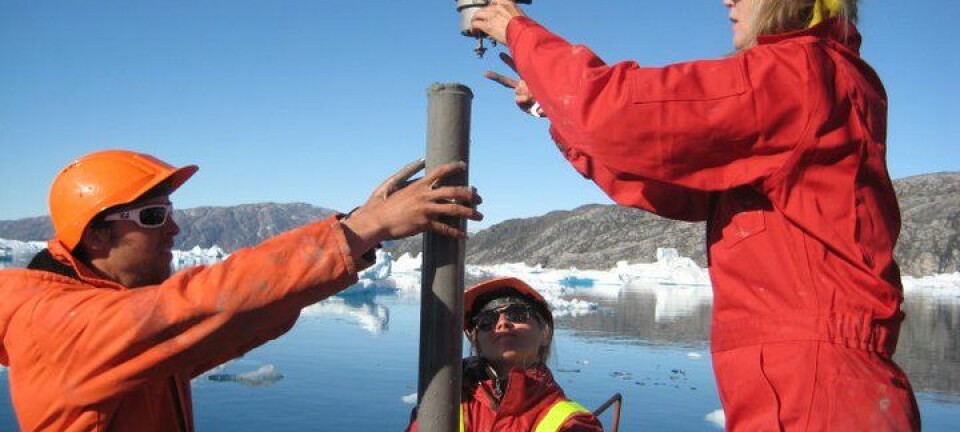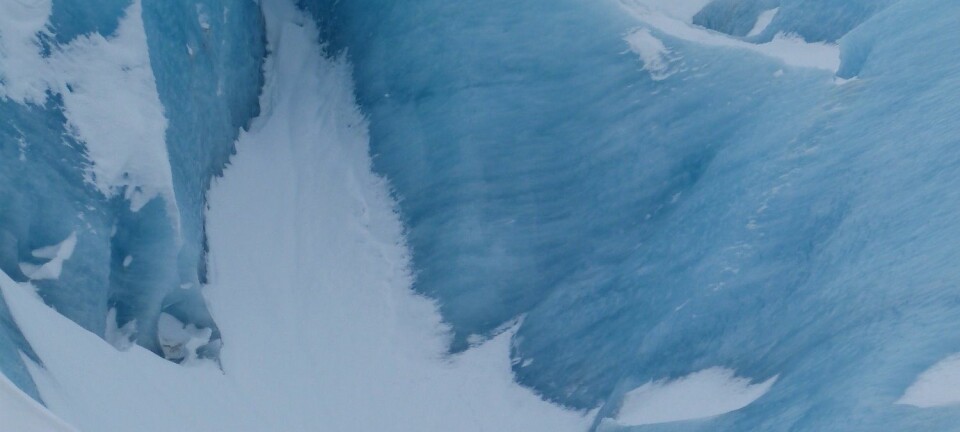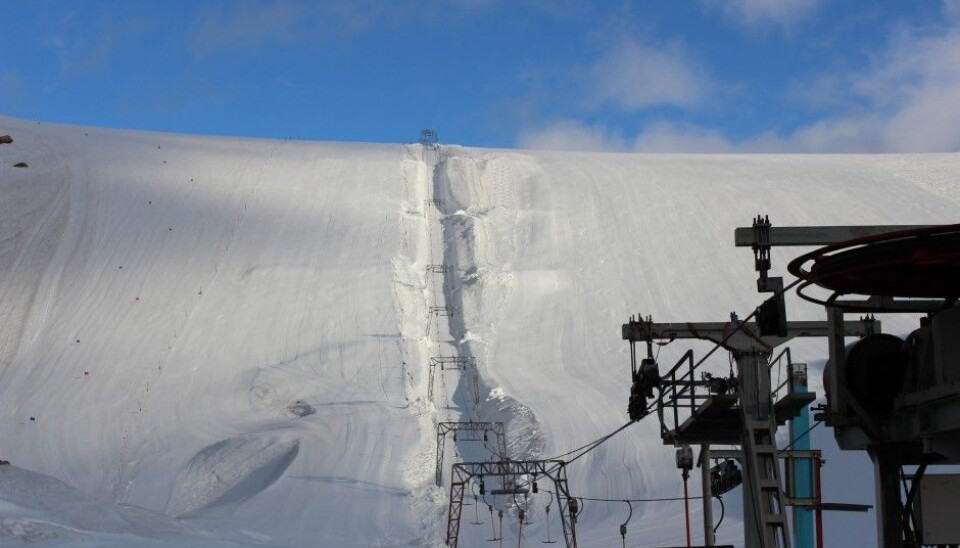
Tiny gravitational changes indicate loss of glacial ice
Researchers have discovered by chance that the ice of the Folgefonna Glacier has thinned by seven metres.
Denne artikkelen er over ti år gammel og kan inneholde utdatert informasjon.
We experience gravity as a constant force. If you knock the coffee cup off your desk you can calculate how much it will accelerate and the time it will take to hit the floor and shatter.
But gravity is much more complicated and sensitive than we can feel. Even though there is more mass directly beneath you atop a mountain than deep in a valley, your increased distance from the centre of the Earth would make you weigh less on a mountain summit.
Such changes are too negligible for us to notice, however. But the most sensitive scientific instruments can detect these changes. One instrument has now shown how much ice has melted from a Norwegian glacier.
Newton’s apple with a laser
Gravity at any given spot can be measured with a gravimeter.
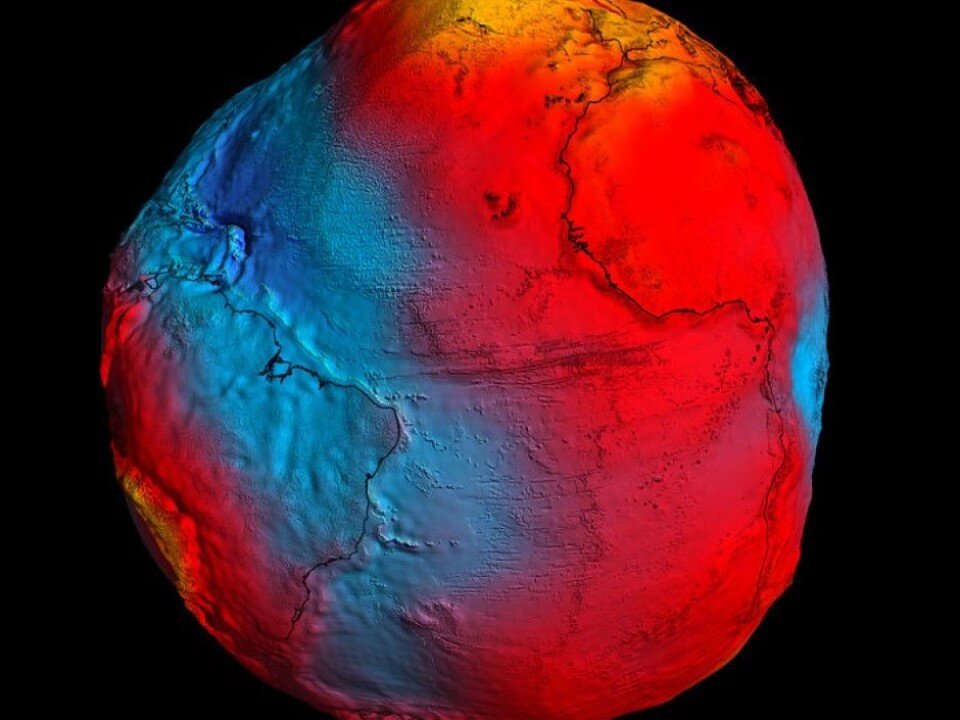
“This is simply a mechanization of Newton’s falling apple,” says Jon Glenn Gjevestad, a professor at the Norwegian University of Life Sciences (NMBU).
The gravimeter consists of a hollow tube that is a near vacuum inside, so that air resistance plays no part. A little prism is allowed to fall down the tube freely.
Each time the prism falls its acceleration is registered with precise instruments, including a laser. It is returned to the top again after each fall with a built-in lift.
The fall of the prism is a tiny bit different each time, and the differences can be used to measure the strength of local gravity.
Seen through the eyes of the gravimeter the Earth is no static clump of rock.
The gravimeter is affected by the Earth’s rotation, the attraction between our planet’s crust and the Moon and even the ongoing slow rebound of land mass that had been weighed down by deep glaciers during the last Ice Age which ended about 12,000 years ago.
It is so sensitive that it can be thrown off by the rush traffic on nearby roads. All these factors and more create miniscule changes in gravitation and vibrations on the surface of the Earth that are registered by the gravimeter.
“We have to account for these effects when we use the instrument,” says Gjevestad.
Melting ice
This instrument can also be used to measure the depth of glacial ice. During a routine calibration of it earlier this year, Gjevestad and his team made a strange discovery.
They had measured gravity at various sites in the Hardanger region on Norway’s west coast in 2005, both down at the fjord and up at the top the Folgefonna Glacier.
When re-checking these values this year, they found that the gravitational values at the top of the glacier no longer matched those made nine years ago. The gravitation indicated that a lot of mass had disappeared from beneath their feet.
“Everything matched well down by the fjord, but things were very off at the top of the glacier,” Gjevestad said. “At first we thought there might be something askew with the instrument,”
The Norwegian Water Resources and Energy Directorate (NVE) routinely inventories and keeps track of Norway’s glaciers, in part using laser measurements from the air. Folgefonna is known to have receded much in the last years.
“We thought that there must be something in the area around the instrument that had changed and the ice was our first guess. We calculated how much ice had disappeared and compared that with the glacial measurements.”
When the NMBU scientists compared their gravitational figures with the tallies by NVE their suspicion was confirmed. The melting of ice from Folgefonna is almost certainly the explanation for the reduction in mass.
“The measurements showed that the changes in gravity in the course of these years amounted to a reduction of ice thickness of seven metres since 2005,” says Gjevestad.
The results are as yet unpublished but Gjevestad thinks the calculations make a consistent match.
He thinks gravimeter measurements can perhaps be used as a supplement to the NVE’s glacial inventories.
----------
Read the Norwegian version of this article at forskning.no
Translated by: Glenn Ostling







